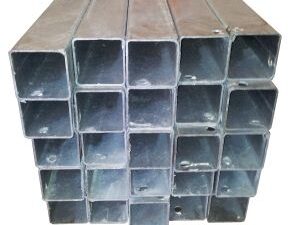Description
Welded Steel Pipes: Strength, Versatility, and Applications Across Industries
Welded steel pipes are a ubiquitous yet often overlooked component of modern infrastructure. From transporting water and natural gas to providing structural support for buildings and bridges, these robust pipes play a vital role in countless applications across diverse industries. Their strength, versatility, and cost-effectiveness have cemented their position as a preferred choice for engineers and constructors worldwide.
What are Welded Steel Pipes?
Unlike seamless steel pipes, which are manufactured from a single piece of steel, welded steel pipes are formed by welding together steel plates or strips. This process involves bending the steel into a tubular shape and then joining the edges using various welding techniques. The resulting pipe offers a strong and reliable conduit for various fluids and materials.
Manufacturing Processes and Types of Welded Steel Pipes:
Several welding methods are employed in the production of welded steel pipes, each offering unique advantages depending on the application and required pipe characteristics. The most common methods include:
- Electric Resistance Welding (ERW): This process utilizes high-frequency electric current to heat the edges of the steel strip to a plastic state, followed by pressure to fuse them together. ERW pipes are typically used for lower-pressure applications like water and gas pipelines.
- Submerged Arc Welding (SAW): This method uses an arc submerged under a layer of granular flux for welding. SAW is known for its high deposition rate and deep penetration, making it suitable for producing large-diameter pipes used in high-pressure transmission lines.
- Spiral Welding (HSAW/SSAW): In this process, a steel strip is spirally wound and welded to create a pipe. Spiral welding allows for the production of large-diameter pipes from relatively narrow steel strips, making it a cost-effective option for pipelines requiring significant length.
- Laser Welding: A relatively newer technology, laser welding offers precise and high-speed welding with minimal heat-affected zones. Laser-welded pipes exhibit excellent dimensional accuracy and are often used in applications demanding high precision.
Advantages of Using Welded Steel Pipes:
Welded steel pipes offer numerous advantages over other piping materials, making them a popular choice for various applications.
- High Strength and Durability: Steel boasts exceptional strength and durability, making welded steel pipes resistant to high pressures, temperatures, and corrosive environments.
- Cost-Effectiveness: Compared to seamless steel pipes, welded steel pipes are generally more cost-effective to manufacture, making them an attractive option for large-scale projects.
- Versatility in Size and Grade: Welded steel pipes can be produced in a wide range of diameters, thicknesses, and steel grades to meet the specific requirements of different applications.
- Ease of Installation and Fabrication: Welded steel pipes are relatively easy to cut, weld, and connect, simplifying installation and fabrication processes.
- Long Lifespan: When properly installed and maintained, welded steel pipes can offer a long service life, minimizing the need for frequent replacements.
Applications Across Industries:
The versatility and robustness of welded steel pipes make them indispensable across a wide range of industries:
- Oil and Gas: Transporting crude oil, natural gas, and petroleum products over long distances.
- Water and Wastewater: Distributing potable water and collecting wastewater in municipal systems.
- Construction: Providing structural support for buildings, bridges, and other infrastructure projects.
- Power Generation: Carrying steam and cooling water in power plants.
- Manufacturing: Transporting various fluids and materials in industrial processes.
- Agriculture: Irrigation systems and water distribution in agricultural settings.
Future Trends:
The future of welded steel pipes is being shaped by ongoing advancements in manufacturing technology and growing demands for sustainable infrastructure solutions. Trends include:
- Improved Welding Techniques: Research and development in welding techniques are leading to faster, more efficient, and higher-quality welds.
- Increased Use of High-Strength Steel: Utilizing high-strength steel grades allows for the production of thinner and lighter welded pipes without compromising strength, reducing material consumption and transportation costs.
- Focus on Corrosion Resistance: Developing and applying advanced corrosion-resistant coatings and materials is extending the lifespan of welded steel pipes and minimizing maintenance needs.
- Integration of Digital Technologies: Implementing digital technologies like IoT sensors and data analytics enables real-time monitoring and predictive maintenance of pipeline systems, enhancing safety and efficiency.
Conclusion:
Welded steel pipes are a fundamental component of modern infrastructure, providing reliable and cost-effective solutions for transporting fluids and materials across a wide spectrum of industries. As technology continues to evolve and demand for sustainable infrastructure grows, welded steel pipes will remain a valuable and essential material for building a more resilient and efficient future.

















Reviews
There are no reviews yet.